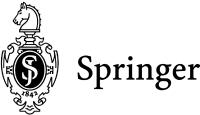7 Art Customization
Individualization
and personalization are characteristics of art
Jochen Gros
C-LAB / Department of Design, Hochschule für Gestaltung (Academy
of Art and Design), Offenbach Germany
It appears that people
have almost forgotten that applied art once was an important part of the
industry. In 1907, it was still possible for the Viennese architect Adolf
Loos to assert that "without ornamentation we would only have to
work four hours a day." This sounds plausible if, for example, we
consider the percentage of artistic output involved in building a cathedral
or building the first, delicately chiseled brass telescopes. Today, the
link between art and consumer goods has been broken as a result of the
industrialization of processes and products. Applied art has been subsequently
ousted from architecture and design. However, we will discuss in this
chapter whether the new technologies and processes of mass customization
could renew the association between art and consumer goods. In view of
the ever-growing possibilities offered by computer-controlled tools and
the general trend towards individualization and personalization, a renaissance
in applied arts could become much likely a feasibility. Applied arts could
embody the highest degree of expressing individualism and personality.
This movement is supported by the capabilities of modern technology: In
our digital age, the applications for art have no longer to be found only
in the realms of handicrafts (or in industrial processes) but could derive
out of the conditions of a mass customization system - resulting in, so
to speak, art customization.
|


